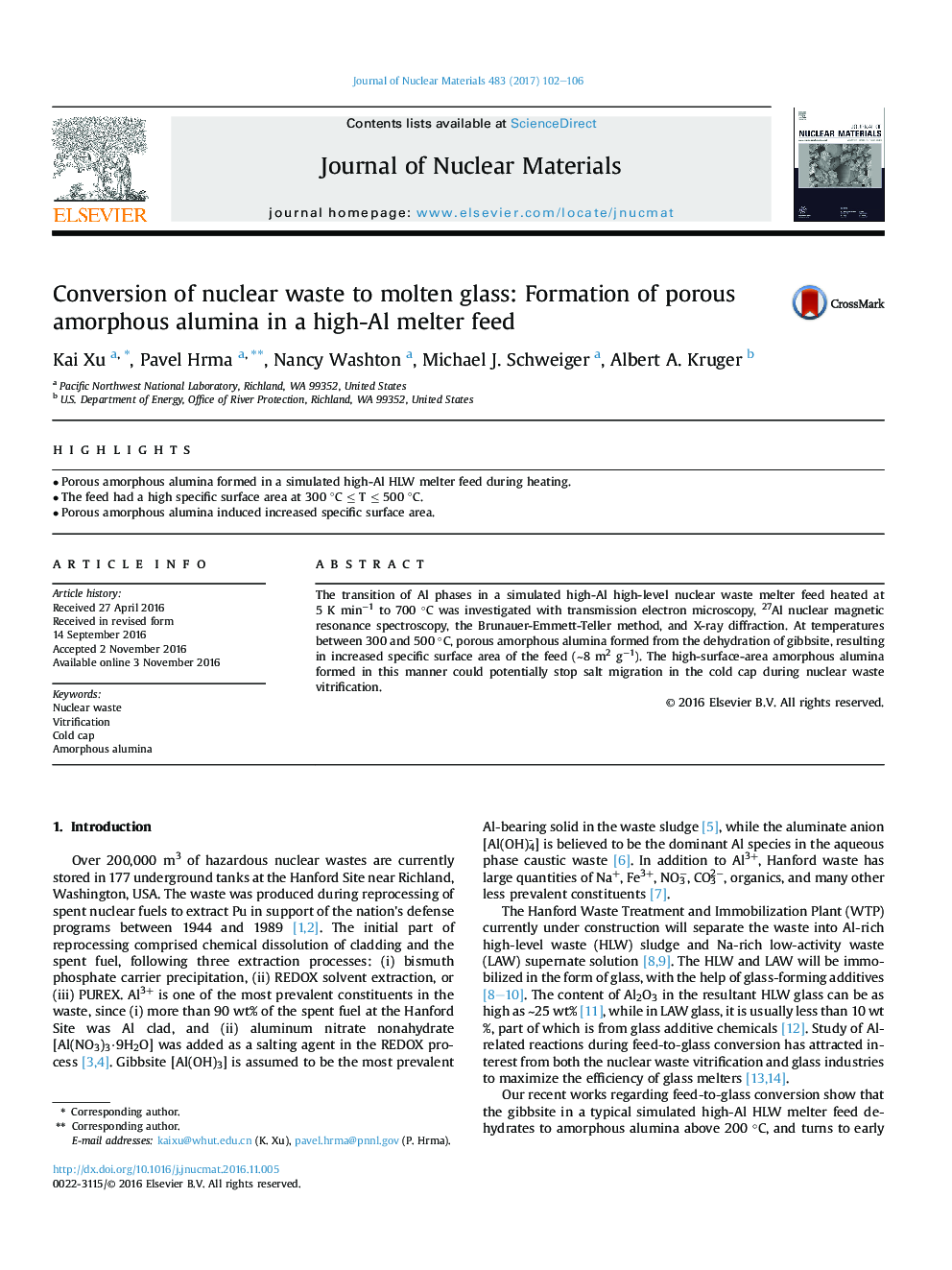| Article ID | Journal | Published Year | Pages | File Type |
|---|---|---|---|---|
| 5454293 | Journal of Nuclear Materials | 2017 | 5 Pages |
Abstract
The transition of Al phases in a simulated high-Al high-level nuclear waste melter feed heated at 5 K minâ1 to 700 °C was investigated with transmission electron microscopy, 27Al nuclear magnetic resonance spectroscopy, the Brunauer-Emmett-Teller method, and X-ray diffraction. At temperatures between 300 and 500 °C, porous amorphous alumina formed from the dehydration of gibbsite, resulting in increased specific surface area of the feed (â¼8 m2 gâ1). The high-surface-area amorphous alumina formed in this manner could potentially stop salt migration in the cold cap during nuclear waste vitrification.
Related Topics
Physical Sciences and Engineering
Energy
Nuclear Energy and Engineering
Authors
Kai Xu, Pavel Hrma, Nancy Washton, Michael J. Schweiger, Albert A. Kruger,
